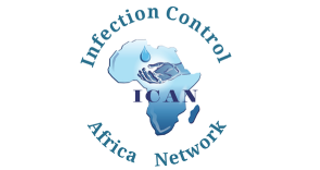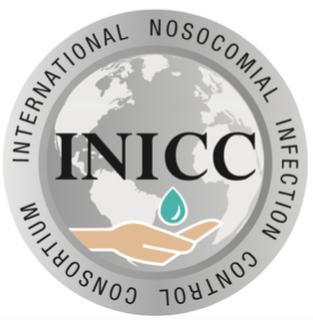 |
|
Maximum: 1 CME cr.,
1 AutoAttendance cr.
Sign in to view your progression
|
Activity Title: Emergence of Chikungunya: Distribution and vector ecology
Release Date: December 13, 2022
Estimated Time to Complete Activity: 70 minutes
Statement of Need:Chikungunya is a mosquito borne viral disease caused by the Chikungunya virus (CHIKV), a Togaviridae virus, and is transmitted by Aedes mosquitoes. Clinical symptoms include acute onset of fever, debilitating joint and muscle pain, headache, nausea, and rash, potentially developing into long-term serious health impairments. Chikungunya virus causes clinical illness in 72 – 92% of infected human around 4 to 7 days after an infected mosquito bite. Complications resulting from the disease include visual, neurological, heart and gastrointestinal manifestations; fatalities have been reported in elderly people at higher risk.
Chikungunya outbreaks have been reported in Asia, Africa, the Americas and recently in Europe. Both the medical and economic burden are expected to grow as the CHIKV primary mosquito vectors continue their geographic spread Although there are some candidate vaccines in clinical trials, none are licensed. Therefore, chikungunya remains a major public health threat.
Faculty:
Dr. Alfonso Rodriguez-Morales, Faculty & Senior Researcher at Colombia, Peru, and Lebanon universities. President, Colombian Assoc. of Infect Diseases. (Colombia)
Nicola Petrosillo, MD, FESCMID Co-leader of the ESCMID Emerging Infection Taskforce, and Chair of the International Affairs SubCommittee of ESCMIDa, and President of the Multidisciplinary Joint Committee- Infection Control of UEMS. (Italy)
Dr. Kenneth Linthicum, Center Director, Center for Medical, Agricultural & Veterinary Entomology, USDA-Agricultural Research Service (USA)
This webinar is supported by an unrestricted educational grant from Valneva.
Technical Requirements
This site and its activities are best viewed using the latest versions of Chrome, Edge, Firefox, and Safari browsers. For interactive content, a broadband connection is required. For CME/CE activities featuring audio, you need a sound card and speakers.
Our activities may require JavaScript to be enabled on your computer. If you are having difficulty viewing pop-up windows, click here for instructions on enabling JavaScript.
Contact Information
If you have questions about this CME activity, please contact The International Society for Infectious Diseases at info@isid.org.
For technical support issues, please contact Multilearning at support@multilearning.com
This webinar is supported by an unrestricted educational grant from Valneva.
This webinar will discuss the emergence of Chikungunya, it's distribution and vector ecology.
Upon completion of this module, participants will be able to:
- Discuss how the Chikungunya virus is transmitted and its clinical symptoms
- Understand the complications that can arise from the disease
- Discuss where outbreaks have been reported, and the lack of vaccines
The target audience for this module is physicians, nurses, public health officials, researchers, immunization officers, and other health professionals.
A Review on Chikungunya Virus Epidemiology, Pathogenesis and Current Vaccine Development
Thaise Yasmine Vasconcelos de Lima Cavalcanti, et al. Viruses. 2022 May.
Limited Capacity for Aedes aegypti to Mechanically Transmit Chikungunya Virus and Dengue Virus. Angela B Bransfield et al. Am J Trop Med Hyg. 2022 Oct.
MALDI-TOF MS: An effective tool for a global surveillance of dengue vector species. Antsa Rakotonirina et al. PLoS One
. 2022 Oct (***Dengue, Zika and chikungunya viruses cause significant human public health burdens in the world. These arboviruses are transmitted by vector mosquito species notably Aedes aegypti and Aedes albopictus)
Impact of temperature on dengue and chikungunya transmission by the mosquito Aedes albopictus.Aurélien Mercier et al. Sci Rep. 2022 Apr.
Estimating chikungunya virus transmission parameters and vector control effectiveness highlights key factors to mitigate arboviral disease outbreaks. Frédéric Jourdain et al. PloS Negl Trop Dis. 2022 Mar.
Overview on Chikungunya Virus Infection: From Epidemiology to State-of-the-Art Experimental Models. Larissa E C Constant et al. Front Microbiol. 2021 Oct.
Arthritogenic alphaviruses: epidemiological and clinical perspective on emerging arboviruses.Ali Zaid et al. Lancet Infect Dis. 2021 May.
Measuring the global burden of chikungunya and Zika viruses: A systematic review. Christopher J Puntasecca et al. PLoS Negl Trop Dis. 2021 Mar.
Chikungunya virus: epidemiology, replication, disease mechanisms, and prospective intervention strategies
Laurie A Silva et al. J Clin Invest. 2017 Mar.
Comprehensive Genome Scale Phylogenetic Study Provides New Insights on the Global Expansion of Chikungunya Virus. Rubing Chen et al. J Virol. 2016 Nov.
Supported by an Unrestricted Educational Grant from Valneva
Disclosure Policy
In accordance with the EACCME Standards for Commercial Support, the International Society for Infectious Diseases (ISID) requires that individuals in a position to control the content of an educational activity disclose all relevant financial relationships with any commercial interest. ISID resolves all conflicts of interest to ensure independence, objectivity, balance, and scientific rigor in all our educational programs. Furthermore, ISID seeks to verify that all scientific research referred to, reported, or used in a CME/CE activity conforms to the generally accepted standards of experimental design, data collection, and analysis. ISID is committed to providing learners with high-quality CME/CE activities that promote improvements in health care and not those of commercial interest.
Activity Staff Disclosures:
The planners, reviewers, editors, staff, or other members at the International Society for Infectious Diseases who control content have no relevant financial relationships to disclose.
ISID Knowledge Exchange and E-Learning Platform Organizing Committee members are listed here along with Committee members’ disclosure forms.
Faculty Disclosures:
The following faculty report that they have no actual or potential conflict of interest in relation to this program/presentation:
Alfonso Rodriguez-Morales has no actual or potential conflict of interest in relation to this program
Nicola Petrosillo has no actual or potential conflict of interest in relation to this program
Kenneth Linthicum has no actual or potential conflict of interest in relation to this program
Disclosure of Unlabeled Use
The International Society for Infectious Diseases requires CME faculty (speakers) to disclose when products or procedures being discussed are off label, unlabeled, experimental, and/or investigational, and any limitations on the information that is presented, such as data that are preliminary, or that represent ongoing research, interim analyses, and/or unsupported opinion. Faculty in this activity may discuss information about pharmaceutical agents that is outside of US Food and Drug Administration approved labeling. This information is intended solely for continuing medical education and is not intended to promote off-label use of these medications. ISID does not recommend the use of any agent outside of the labeled indications. If you have questions, contact the Medical Affairs Department of the manufacturer for the most recent prescribing information.
Disclaimer
The International Society for Infectious Diseases presents this information for educational purposes only. The content is provided solely by faculty who have been selected because of recognized expertise in their field. Participants have the professional responsibility to ensure that products are prescribed and used appropriately on the basis of their own clinical judgment and accepted standards of care. The International Society for Infectious Diseases, and the former commercial supporter assume no liability for the information herein.
Copyright Information
Copyright © 2022 by the International Society for Infectious Diseases. Any unauthorized use of any materials on the site may violate copyright, trademark, and other laws. You may view, copy, and download information or software ("Materials") found on the Site subject to the following terms, conditions, and exceptions:
• The materials are to be used solely for personal, noncommercial, informational and educational purposes. The materials are not to be modified. They are to be distributed in the format provided with the source clearly identified. The copyright information or other proprietary notices may not be removed, changed, or altered.
• Materials may not be published, uploaded, posted, transmitted (other than as set forth herein), without the International Society for Infectious Diseases' prior written permission.
Privacy Policy
The International Society for Infectious Diseases protects the privacy of personal and other information regarding participants and educational collaborators. The International Society for Infectious Diseases will not release personally identifiable information to a third party without the individual's consent, except such information as is required for reporting purposes to the ACCME.
The International Society for Infectious Diseases maintains physical, electronic, and procedural safeguards that comply with federal regulations to protect against the loss, misuse, or alteration of information that we have collected from you.
Additional information regarding the International Society for Infectious Diseases Privacy Policy and ISID’s Knowledge Exchange and E-Learning Platform Privacy Policy can be viewed at https://isid.org/privacy-policy/ and https://exchange.isid.org/isid/legal/terms-and-conditions.
|
ACCREDITED ACTIVITY
Emergence of Chikungunya: Distribution and Vector Ecology
|
|







